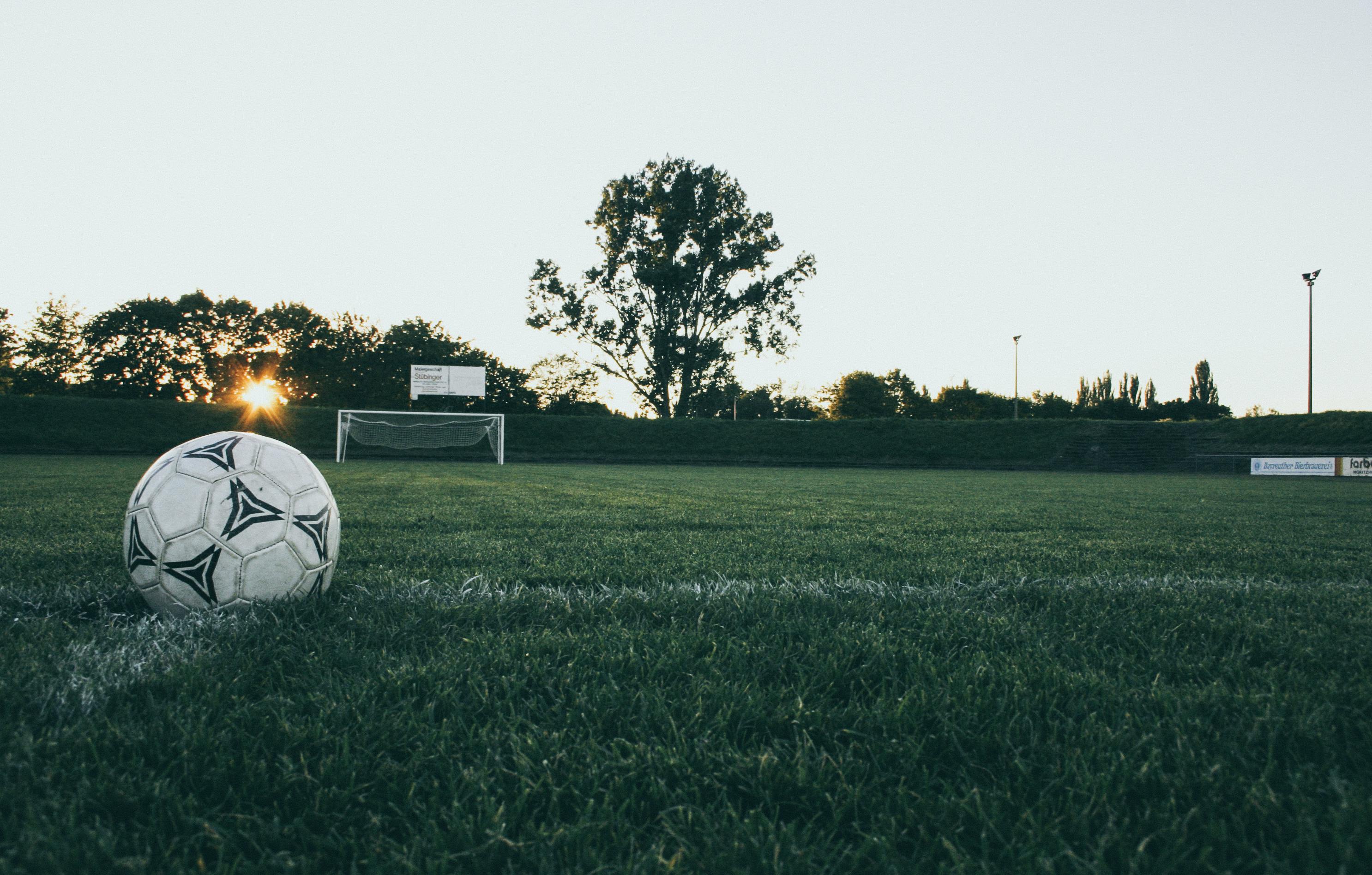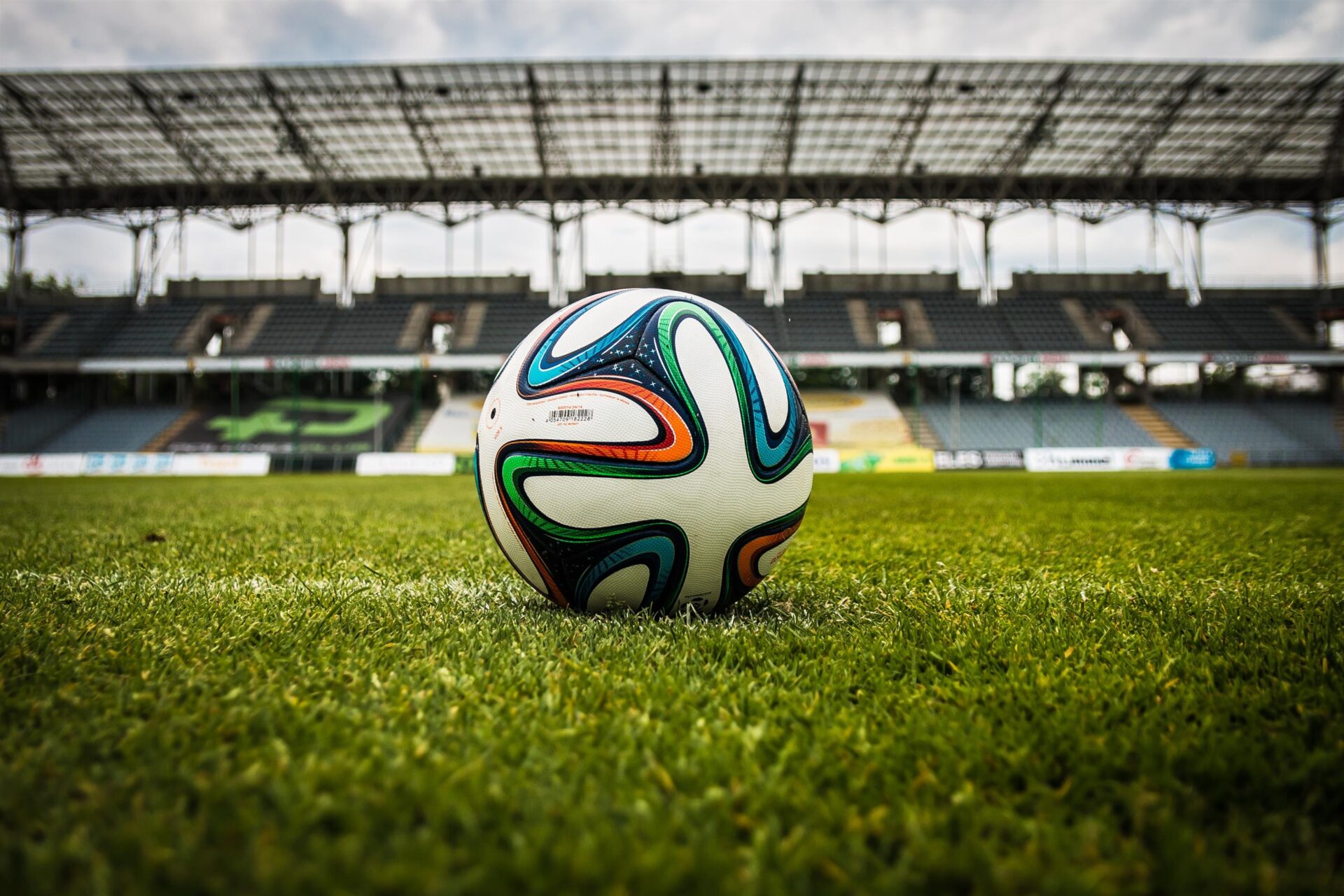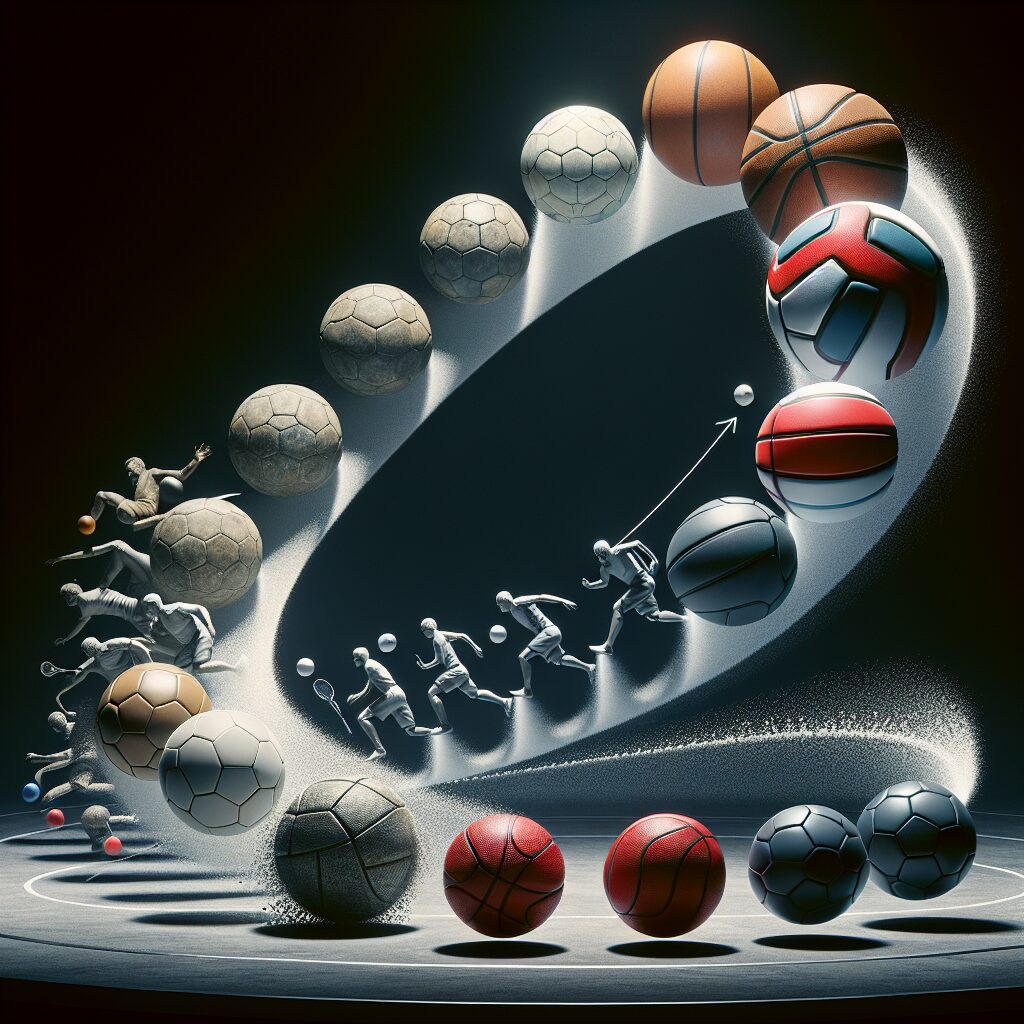Soccer is one of the most popular sports in the world, and millions of people play it at all levels. It’s no surprise, then, that there is a lot of interest in what size soccer ball the professionals use. In this article, we will look at the size of soccer ball used by professional players and discuss why it matters. We’ll also explore the different types of balls available and what makes them suitable for different levels of play. Finally, we’ll talk about how to choose a soccer ball that is right for you.Professional soccer players use a size 5 soccer ball.
What Are the Different Soccer Balls Sizes?
Soccer balls come in different sizes and weights, depending on the age and skill level of the players. The three main categories are size 3, size 4, and size 5. Size 3 is generally used for players under 8 years old. Size 4 is typically used for players age 8 through 12 and size 5 is meant for players 13 years old and older. In addition to age-related ball sizes, there are also a few different weight categories of soccer balls.
Size 3 soccer balls are usually the lightest balls because they are designed for younger players who may not be able to handle heavier balls. They typically weigh between 11 ounces and 12 ounces. Size 4 soccer balls usually weigh between 12 ounces and 13 ounces, making them a bit heavier than their smaller counterparts. Size 5 soccer balls are the heaviest and can weigh up to 16 ounces or more depending on the specific ball.
In addition to different sizes and weights, soccer balls also come in different materials such as leather or synthetic leather. Leather soccer balls offer better control while synthetic leather ones offer durability at a lower price point. The choice of material depends on personal preference as well as budget constraints.
It’s important to pick the right sized soccer ball for your game since it can affect how well you play. Even though all three sizes can be used by any player regardless of age or skill level, it’s best to pick a ball that best fits your needs in order to maximize performance on the field!
Size 5 Soccer Balls: The Official Size of Professional Matches
The size of the soccer ball is important since it affects how it behaves and is handled on the field. Size 5 soccer balls are the official size used for professional matches and are suitable for players aged 12 and older. The circumference of a size 5 soccer ball is 68-70 cm, with a weight of 410-450 grams. This size has been used for professional matches since 1950, when FIFA made it the official match ball size.
Size 5 balls offer better control and accuracy when kicked or passed due to their larger size. They also offer improved accuracy from set pieces such as corner kicks, free kicks, and penalty kicks due to their increased stability in flight. The larger size also offers more power when shooting at goal, as more force can be generated by a larger ball. This makes them well suited for competitive match play, as they provide players with more options when attacking or defending.
Size 5 soccer balls are typically constructed using a combination of synthetic leathers, polyester materials, rubberized bladders, and foam linings to provide players with an optimal combination of durability, grip, and responsiveness during play. They are designed to handle the rigors of professional match play and should be inspected before use in order to ensure they meet safety standards. It is recommended that these balls be inflated to the pressure recommended by the manufacturer in order to maximize performance.
In conclusion, size 5 soccer balls are the official size used for professional matches and provide players with improved control, accuracy, power, durability, grip, and responsiveness during play. They should be inspected prior to use in order to ensure they meet safety standards and should always be inflated according to manufacturer specifications in order to maximize their performance on the field.
Size 4 Soccer Balls: The Official Size for Youth Games
Soccer is one of the most popular sports in the world, and it’s no surprise that youth soccer has grown over the decades. As young players get more involved in the game, they need to understand the importance of using the right equipment, especially when it comes to choosing a soccer ball. Size 4 soccer balls are officially recognized as the standard size for youth games up to age 12.
This size ball offers many advantages for younger players. It is easier to handle and control than a larger ball because of its smaller size and lighter weight. This makes it much easier for kids to kick, dribble, and pass accurately without feeling overwhelmed by a bigger or heavier ball. Additionally, a size 4 ball provides just enough bounce on contact with the ground so that young players can learn how to trap and control it without feeling frustrated by an unpredictable bounce trajectory.
The regulation size also helps younger players develop better footwork and ball-handling skills since they can be more precise and accurate with their movements while controlling a smaller soccer ball. Therefore, playing with this size of soccer ball is essential for children’s development of basic soccer skills such as passing and dribbling.
In addition to being used in youth games, size 4 balls are also designed for recreational use in backyard play or at parks. They are made from durable materials that stand up well against outdoor surfaces like concrete or grass, making them a great choice for kids who want to practice on their own or play pickup games with their friends.
When selecting a soccer ball for your child or team, make sure you choose one that is labeled “size 4” so they can get maximum enjoyment out of their game-play experience! By investing in quality equipment like this official-sized soccer ball, young players will have everything they need to stay safe while learning the basics of this wonderful game!
Choosing the Right Size Soccer Ball for Your Age Group
It is important to choose the right size soccer ball for your age group when playing soccer. Younger players should use a smaller ball than older players. The size of the ball should also depend on the level of play, as well as the individual player’s height and skill level. It is important to make sure that the size of the ball is comfortable for the player to control and kick.
The most common size soccer balls are sizes 3, 4, and 5. Size 3 soccer balls are recommended for children ages 8 and under playing recreational soccer. This size ball is small enough for younger players to easily control and kick it around. It is also light enough for them to carry around if needed.
Size 4 soccer balls are recommended for children ages 8-12 playing recreational or competitive soccer. This size ball is slightly larger than a size 3, but still light enough for younger players to handle comfortably. It also has a slightly higher bounce than a size 3 ball, which makes it easier for younger players to control when kicking or dribbling.
Size 5 soccer balls are recommended for all levels of play above recreational level, including high school, college, professional, and international levels of competition. This larger size provides more power behind shots and passes compared to smaller sizes, making it more suitable for older and more experienced players who can better handle its weight and power.
When choosing a soccer ball for your age group or individual skill level, it is important to consider comfort as well as performance needs. The right size will help ensure that you have an enjoyable experience while playing the game you love!

Is There a Difference Between Soccer Balls Used in Professional Matches and Recreational Games?
Yes, there is a difference between soccer balls used in professional matches and recreational games. Professional soccer matches use FIFA-approved soccer balls that are specifically designed for competitive play and are regulated by FIFA’s Quality Program for Soccer Balls. These balls meet the highest standards of performance, quality, durability, and safety set by FIFA. They are also tested to ensure they meet these standards before they can be used in professional matches.
On the other hand, recreational soccer balls are typically designed for recreational play and are not regulated by FIFA. These balls usually have lower quality materials than professional-level soccer balls, which can result in inferior performance and durability. Most recreational soccer balls also lack the features of a professional-level ball, such as dimples or airtightness technology.
In addition to differences in performance and quality, the size of the ball also differs between professional matches and recreational games. Professional matches use size 5 soccer balls for adults while recreational games typically use size 4 or 3 balls. The larger size 5 ball is heavier than its smaller counterparts, making it more difficult to control for less experienced players.
Overall, there is a clear difference between soccer balls used in professional matches and those used in recreational games. Professional matches require high-performance balls with higher quality construction that meet stringent FIFA standards while recreational games do not require these high performance features and typically use smaller sized lighter weight soccer balls.
Size
The size of a soccer ball is an important factor to consider when choosing the right one. Soccer balls come in three sizes: size 3, size 4, and size 5. Size 3 is best for children under the age of 8 and those new to the game, while size 4 is best for ages 8-12 and those just starting out in competitive play. Size 5 is the official size of a regulation soccer ball and is used in all official competitive matches.
Material
The material used to make a soccer ball can have an effect on its performance, durability, and feel. The most common materials used are rubber, polyurethane, synthetic leather, or a combination of these materials. Rubber balls are typically cheaper but don’t last as long as higher quality materials like polyurethane or synthetic leather. Polyurethane is usually more expensive but provides better performance and greater durability than rubber balls.
Design
The design of a soccer ball can affect its performance on the field as well as its ability to take abuse from hard surfaces or weather conditions. Professional-grade balls usually feature hand-stitched panels that are specially designed to increase accuracy and control when kicking or shooting the ball. Cheaper balls may feature fewer panels that are machine stitched together which can lead to less control when shooting or passing the ball.
Price
Price should also be taken into consideration when choosing the right soccer ball. Professional-grade balls tend to be more expensive than lesser quality models but they also tend to provide better performance and last longer than cheaper alternatives. It’s important to find a balance between quality and price when shopping for a soccer ball so you get the most bang for your buck.
Is There an Ideal Weight for Professional-Level Soccer Balls?
The weight of a soccer ball is an important factor for professional-level play. It affects the speed, control, and accuracy of the ball when it is kicked. The weight also affects the way it bounces off the ground and how it moves in the air. Professional-level soccer balls are usually made with rubber or synthetic materials that are designed to provide a consistent weight and shape. However, there is no set weight for professional-level soccer balls, as each manufacturer has their own standards. Generally, a professional-level soccer ball should weigh between 14-16 ounces (400-450 grams).
The size of the soccer ball also affects its performance on the field. Professional leagues use different sizes depending on age group and skill level. For instance, youth teams may use a smaller size 3 ball while adult teams may use a larger size 5 ball. The circumference of each size ball is within 1/4 inch (6 mm) of each other but can still result in varying feel when playing with different sizes.
The type of material used in making a soccer ball can also affect its weight and performance characteristics. Most professional-level balls are made from either natural or synthetic leather which provides a softer feel on contact with the foot but also adds more weight to the overall design. Other materials such as polyurethane foam or rubber can be used to make lighter balls that are easier to kick over long distances but tend to be less durable than those made from leather or synthetic materials.
In general, there is no one ideal weight for professional-level soccer balls as it depends on many factors such as size, material used, and manufacturer’s standards. However, most professional leagues prefer balls between 14-16 ounces (400-450 grams) as this provides optimal performance on the field while still providing enough durability for long term use.

Conclusion
The size of soccer ball used by professional players is 5, as set by FIFA standards. This size is slightly larger than a standard youth soccer ball and provides the perfect amount of control for most players. The material used in these balls is also designed to last longer and perform better under the rigors of professional competition. While the size of a soccer ball may not seem like an important factor, it can have an effect on performance and technique. Professional players have the advantage of using regulation-size balls that are designed specifically for their sport.
In conclusion, professional soccer players use a regulation-size 5 soccer ball for their competitions. These balls are made from high quality materials and are designed to last longer under the pressures of competitive play. The regulation size 5 soccer ball provides a more comfortable fit for most players, allowing them to make more accurate passes and shots during matches. Understanding the proper size soccer ball to use can help any player reach their fullest potential on the field.




